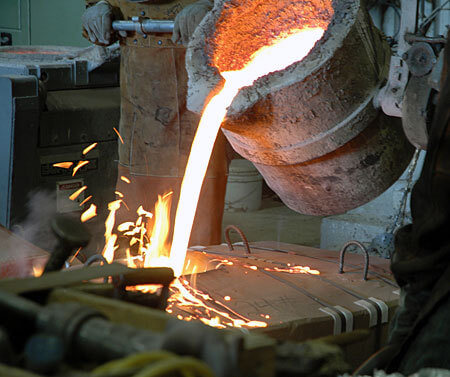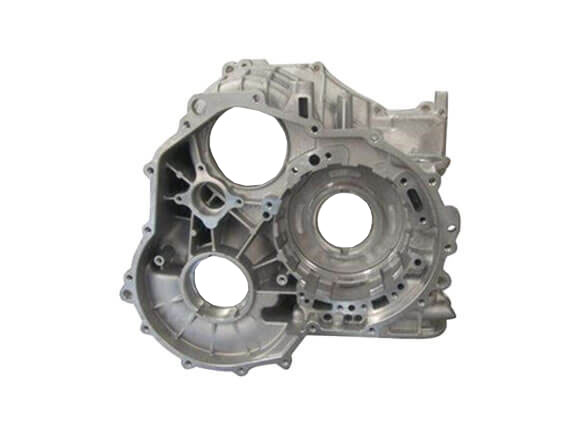Why Aluminum Casting Company Essential in the Aerospace Industry
Aluminum Casting Explained: Secret Facts and Insights for Sector Professionals
Aluminum casting works as a vital procedure in modern manufacturing, forming components throughout different fields. Its varied approaches, such as sand and die casting, accommodate different manufacturing needs. The special residential or commercial properties of aluminum alloys improve their applicability, yet challenges stay in keeping high quality and performance. Comprehending these aspects is vital for industry experts. What are the current advancements and ideal practices that can better enhance this process?
Summary of Aluminum Casting Processes

Crucial element of aluminum casting processes include the prep work of mold and mildews, which might be made from sand, steel, or ceramic materials, depending upon the intended usage. Additionally, temperature control is crucial to ensure correct melting and solidification of aluminum.
The casting procedure enables elaborate designs and can achieve high degrees of dimensional precision. When cooled down, the castings might go through ending up operations such as machining or surface treatment to satisfy details efficiency criteria. Generally, aluminum casting functions as a functional manufacturing method, properly meeting the varied requirements of various industries.
Kinds of Aluminum Casting Approaches
In the domain name of aluminum casting, various techniques are employed to achieve various outcomes. Sand casting methods give versatility and cost-effectiveness for complex forms, while die casting procedures use high precision and effectiveness for mass production. Understanding these approaches is crucial for choosing the appropriate strategy based upon task needs.
Sand Casting Strategies
Sand casting methods stand for an essential technique in aluminum casting, where sand is used as a mold and mildew product to shape molten metal. This procedure includes creating a pattern from the wanted part, which is then placed in a sand blend to create a mold and mildew. The sand is compressed around the pattern, and after removal, it produces a dental caries in the form of the component. Molten aluminum is put into this tooth cavity, permitting it to solidify and cool. One significant advantage of sand casting is its versatility; it can accommodate intricate shapes and large components. In addition, the materials used are fairly economical, making it an obtainable option for various manufacturing applications in the aluminum industry.
Die Casting Processes
Die casting processes are a popular method for shaping aluminum elements, utilizing high-pressure techniques to force molten metal right into specifically crafted molds. This process is especially favored for its capability to create complicated forms with tight tolerances and a smooth coating. There are two key types of die casting: warm chamber and chilly chamber. Warm chamber die casting appropriates for steels with reduced melting factors, enabling faster manufacturing rates. Conversely, cold chamber die casting is optimal for higher melting factor steels, calling for a separate melting heating system. Both methods boost effectiveness and lower product waste, making them crucial in automotive, aerospace, and durable goods industries. Understanding these procedures aids professionals choose one of the most proper technique for their specific applications.
Product Quality of Aluminum Alloys

Toughness and Durability
Stamina and longevity are crucial characteristics of aluminum alloys that make them ideal for various casting applications. These materials display a beneficial strength-to-weight proportion, permitting for the creation of light-weight yet durable parts. When it come to tensile stamina, certain aluminum alloys can be crafted to hold up against considerable loads without deforming. This building is specifically important in markets such as aerospace and auto, where efficiency and safety and security are critical. Furthermore, aluminum alloys typically keep their mechanical properties under varied temperature level problems, making certain constant performance. The innate ductility of these alloys also permits effective shaping throughout the casting procedure, making it less complicated to generate complicated geometries. Overall, the strength and resilience of aluminum alloys contribute greatly to their widespread usage in innovative applications.
Rust Resistance Characteristics
While aluminum alloys are valued for their stamina and lightweight residential or commercial properties, their rust resistance is an additional crucial quality that enhances their viability for different applications. Aluminum naturally forms a safety oxide layer when subjected to moisture, which assists to avoid more oxidation. This intrinsic residential property makes aluminum alloys especially valuable in settings prone to rust, such as marine and industrial setups. In addition, various alloy structures can affect resistance degrees, with specific alloys particularly engineered to boost this particular. Treatments like anodizing can even more enhance deterioration resistance by thickening the oxide layer. As a result, understanding the deterioration resistance of aluminum alloys is essential for industry professionals when selecting materials for projects needing longevity and durability in tough atmospheres.
Advantages of Aluminum Casting in Production
Aluminum casting offers numerous benefits in manufacturing, making it a recommended selection for numerous industries. One Precision aluminum casting considerable advantage is its lightweight nature, which contributes to reduced transport prices and boosted power efficiency in final result. Additionally, aluminum's superb thermal and electric conductivity boosts capability in applications calling for heat dissipation or electrical conduction.
The product's capacity to be cast right into intricate forms enables design flexibility, decreasing the requirement for extra machining processes. On top of that, aluminum casting displays remarkable deterioration resistance, bring about longer item life-spans and lower upkeep expenses.

Common Applications of Aluminum Castings
The adaptability of aluminum casting allows its extensive usage throughout numerous industries. Usual applications consist of auto components, where light-weight and corrosion-resistant components, such as engine blocks and transmission housings, improve lorry performance. In the aerospace industry, aluminum spreadings are made use of for architectural components, supplying toughness without adding significant weight.
Additionally, the electrical market gain from aluminum spreadings in manufacturing units and heat sinks, where thermal conductivity is important. The durable goods field additionally integrates aluminum spreadings in products like pots and pans, furnishings, and decorative items, integrating appearances with functionality.
Moreover, the building sector utilizes aluminum spreadings for building aspects, window frameworks, and components, which give resilience and design versatility. In general, the varied applications of aluminum spreadings emphasize their relevance in modern manufacturing, contributing to improvements in performance and item style across several areas.
Technologies and Technical Innovations
As sectors remain to develop, developments in aluminum casting innovation are transforming manufacturing processes and item capacities. Innovations in 3D printing and additive manufacturing have made it possible for the production of intricate geometries that were formerly difficult to accomplish with conventional methods. These modern technologies enable quick prototyping, reducing preparations and expenses.
Additionally, renovations in mold layout and materials have actually improved the casting process by increasing effectiveness and lowering waste. The combination of smart production strategies, such as IoT devices and real-time data analytics, permits much better surveillance and optimization of manufacturing parameters, causing better outputs.
In addition, advancements in aluminum alloys offer enhanced stamina, deterioration resistance, and lightweight homes, catering to the growing demands in aerospace and automotive industries. Collectively, these developments are not just enhancing efficiency yet likewise meeting the strenuous criteria of modern-day design applications.
Ideal Practices for Quality Assurance in Aluminum Casting
Ensuring high-grade outcomes in aluminum casting requires adherence to best practices that encompass numerous stages of the production procedure. Detailed material inspection is essential to validate the top quality of aluminum alloys made use of, as impurities can significantly affect the final product. Implementing specific melting and putting methods decreases issues; maintaining optimal temperatures avoids oxidation and advertises harmony.
In addition, mold style plays an important function; using computer-aided layout (CAD) can improve precision and minimize human error. Regular monitoring of the cooling procedure is important to stay clear of bending and contraction. In addition, utilizing non-destructive screening approaches, such as ultrasonic or X-ray examinations, assists recognize inner flaws without harming the parts.
Establishing a comments loophole with designers and operators fosters constant improvement, ensuring that high quality control steps progress together with technological developments. By following these ideal techniques, manufacturers can improve the reliability and performance of aluminum castings.
Regularly Asked Concerns
What Are the Ecological Impacts of Aluminum Casting?
The ecological impacts of aluminum casting include considerable energy usage, greenhouse gas discharges, and potential water contamination from shop operations. Furthermore, bauxite mining for aluminum ore can bring about habitat destruction and soil degradation.
How Does Aluminum Casting Compare to Various Other Metal Casting Processes?
Aluminum casting normally supplies advantages in lightweight parts and deterioration resistance contrasted to various other processes, such as iron or steel casting, which may give better toughness yet lead to heavier and less corrosion-resistant items. - aluminum casting
What Are Typical Flaws in Aluminum Castings and Their Causes?
Common flaws in aluminum spreadings include porosity, contraction, and inclusions. Causes typically originate from improper putting methods, poor mold style, or contamination of the liquified steel, affecting the end product's honesty and performance.
What Safety Preventative Measures Should Be Taken Throughout Aluminum Casting?
During aluminum casting, necessary safety preventative measures include wearing protective equipment, making certain proper ventilation, keeping a tidy work space, handling molten steel with treatment, and following established protocols to decrease threats of burns, breathing risks, and crashes.
How Can I Boost the Efficiency of My Aluminum Casting Workflow?
To enhance performance in aluminum casting procedures, one ought to maximize mold and mildew layout, streamline material handling, utilize automated processes, perform routine upkeep on equipment, and invest in staff member training to improve skills and productivity.
Various approaches exist, aluminum casting encompasses several main procedures that provide to different applications and needs. Key elements of aluminum casting processes consist of the prep work of molds, which may be made from sand, steel, or ceramic products, depending on the meant usage. Sand casting methods represent a fundamental method in aluminum casting, where sand is utilized as a mold product to shape liquified metal. As sectors proceed to progress, technologies in aluminum casting modern technology are changing manufacturing processes and product capabilities. Guaranteeing premium outputs in aluminum casting requires adherence to best techniques that incorporate various stages of the manufacturing procedure.